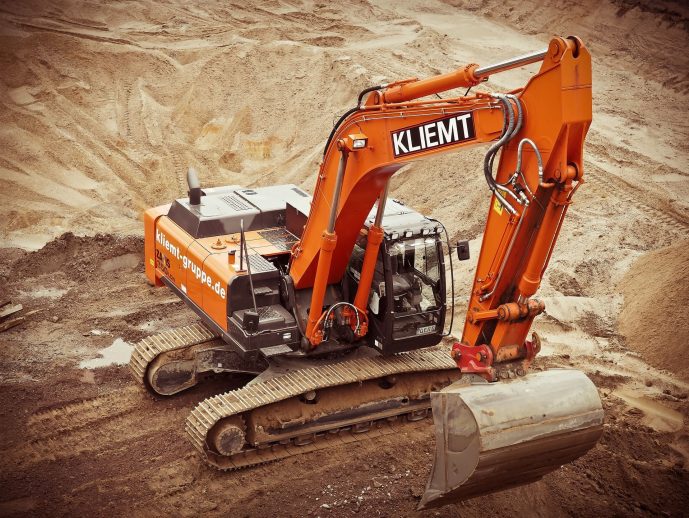Categories more
- Adventures (17)
- Arts / Collectables (15)
- Automotive (37)
- Aviation (11)
- Bath, Body, & Health (77)
- Children (6)
- Cigars / Spirits (32)
- Cuisine (16)
- Design/Architecture (22)
- Electronics (13)
- Entertainment (4)
- Event Planning (5)
- Fashion (46)
- Finance (9)
- Gifts / Misc (6)
- Home Decor (45)
- Jewelry (41)
- Pets (3)
- Philanthropy (1)
- Real Estate (16)
- Services (23)
- Sports / Golf (14)
- Vacation / Travel (60)
- Watches / Pens (15)
- Wines / Vines (24)
- Yachting / Boating (17)
Breaking Ground: The Latest Innovations in Heavy Machinery
Published
08/06/2025There’s something about watching a site go from bare earth to a fully formed building that feels almost magical, except it’s not exactly magic, and you remember the sheer amount of work that goes into every foundation, beam, and bolt. And if you’ve ever been on a construction site, you’ll know how important it is to have tools that don’t just function but evolve into their most efficient versions. You need the most efficient generators, for example, and you need great skilled workers.
The projects are getting bigger, deadlines tighter, and expectations higher. And all of that pressure lands squarely on the shoulders of the machines and the people operating them.
It’s more than just metal.
It’s not just about lifting and digging anymore. Machines now come with integrated GPS, automation systems, and predictive maintenance alerts. Construction has started to borrow from the automotive industry and even aerospace, where every feature is built for precision. And as they should. It’s the 21st century! You can’t afford to be using outdated systems.
Even something as specific as ground preparation has seen major improvements. For example, plate compactors used to be basic machines. They were heavy, noisy, and just a huge hassle to handle. Now, new models are compact and user-friendly while being powerful enough to compact soil, gravel, and even asphalt evenly. They’re must-haves for creating a stable base, whether you’re building a highway or a garden patio. Smaller machines also mean they can reach tighter spaces, making them just as valuable in dense urban areas as they are on big open sites.
It’s the kind of change that sneaks up on you. You don’t realise how much time you were wasting with older tools until you try something newer and better designed. With modern compactors, you can do your job faster, safer, and with far less physical strain.
Speed doesn’t equal productivity.
Efficiency isn’t always about doing things quickly. To me, it’s about doing them smartly. Smart tech now helps manage fuel consumption, alerts operators before something breaks down, and can even send performance reports to project managers in real-time. And all of this is happening on machines that used to be written off as purely mechanical. It’s a digital upgrade that’s bringing construction into the 21st century.
And this doesn’t only apply to machines with engines. It includes the entire ecosystem of a job site. Let’s talk storage. Have you ever walked onto a site and seen tools scattered everywhere? That’s something no one wants to deal with, especially at the start of their work days.
That’s exactly why more and more businesses are leaning towards smart industrial racking systems that help them stay on top of things, literally and figuratively. It saves everyone the time and energy of digging through clutter just to find the right tool or part. And when everything’s got its place, you’re way less likely to lose or damage expensive equipment. It just makes life easier for your team.
The operator of the machine is more important.
One of the less talked about but nonetheless, important innovations in heavy machinery is the focus on user experience. Modern machines are being designed with the operator in mind. Adjustable seating, better insulation, intuitive interfaces, and even climate control are becoming standard. Why? Because a comfortable operator is a more alert and efficient one. Fatigue and discomfort can easily lead to mistakes. And mistakes anywhere are costly but in construction? It’s a whole other story. Here, mistakes can lead to long-term safety risks and the whole project being compromised.
So, I don’t know about you, but I’m gonna welcome user-centred innovations with open arms!
AI in construction?
As technology continues to evolve, expect to see even more automation, AI integration, and hybrid machinery that blends the best of electric and diesel. We’re already seeing 3D printing used for building components, and autonomous site vehicles are no longer a pipe dream.
But in the middle of all this innovation, one thing remains the same: reliability matters. You can have the smartest system in the world, but if it doesn’t hold up in real-world conditions, it’s just another fancy tool.
Whether it’s through good cherry pickers or efficient industrial racking systems, the goal is clear: keep things moving, keep people safe, and get the job done better than yesterday.
And if the last few years have taught us anything, it’s that the future of construction doesn’t just lie in taller buildings or stronger bridges. It lies in the smarter tools we use to build them.















